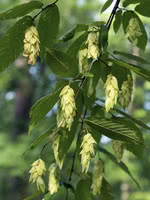Mon-Fri 9am - 5pm Mountain time
Black Cherry vs Ironwood Tree
Ostrya virginiana
Prunus serotina
NOT AVAILABLE THIS SEASON - MIGHT RETURN
NOT AVAILABLE THIS SEASON - MIGHT RETURN
Ironwood Tree is one of the strongest and most resilient trees you will find in North America. In fact, it has the hardest and most dense wood of any North American tree. Prized for its oval shaped canopy and showy winter trunk, this striking shade tree will make a beautiful addition to any yard. Make sure you do not plant near roads as it is highly salt sensitive.
Black Cherry is common in eastern North America but a rare find elsewhere. This tree is shade tolerant and is often found in old fields, forest openings, and along fencerows.
The fruit is edible and is commonly used to flavor rum and brandy. It is also edible and often eaten fresh or used in wine or jelly. Black Cherry trees typically begin producing fruit when they are 10 years of age.
Black Cherry wood is a rich reddish-brown color and is strong, making it valued in cabinetry and woodworking. It is often used in reclamation as well.
The leaves can poison livestock as they contain cyanide derivatives and precursors. However, many have noted that deer still seem to browse their trees with impunity and birds and other animals eat the fruit when available.
Ironwood Tree Quick Facts
Black Cherry Quick Facts
Toxicity: bark and wilted leaves toxic to livestock

